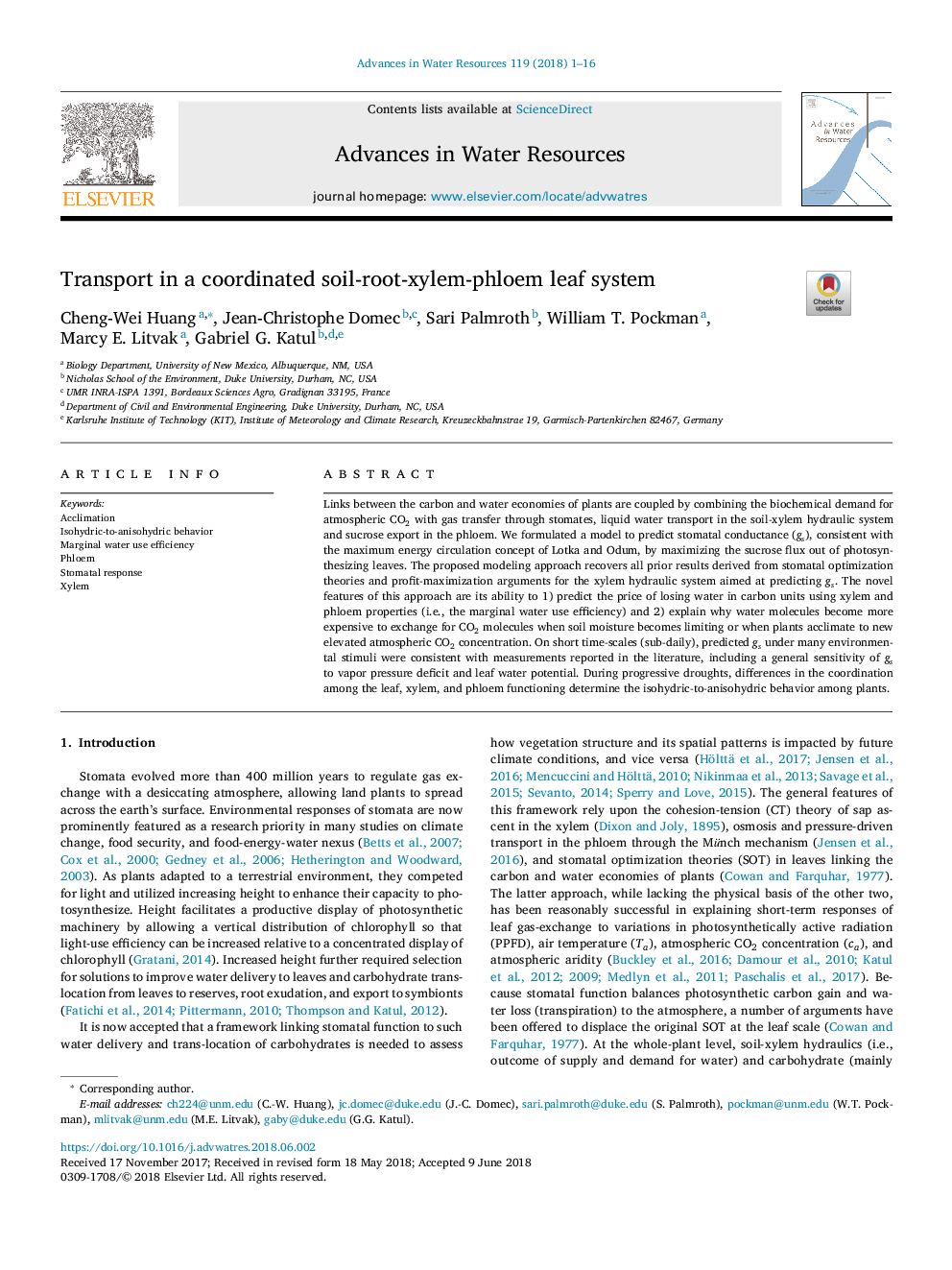| Article ID | Journal | Published Year | Pages | File Type |
|---|---|---|---|---|
| 8883242 | Advances in Water Resources | 2018 | 16 Pages |
Abstract
Links between the carbon and water economies of plants are coupled by combining the biochemical demand for atmospheric CO2 with gas transfer through stomates, liquid water transport in the soil-xylem hydraulic system and sucrose export in the phloem. We formulated a model to predict stomatal conductance (gs), consistent with the maximum energy circulation concept of Lotka and Odum, by maximizing the sucrose flux out of photosynthesizing leaves. The proposed modeling approach recovers all prior results derived from stomatal optimization theories and profit-maximization arguments for the xylem hydraulic system aimed at predicting gs. The novel features of this approach are its ability to 1) predict the price of losing water in carbon units using xylem and phloem properties (i.e., the marginal water use efficiency) and 2) explain why water molecules become more expensive to exchange for CO2 molecules when soil moisture becomes limiting or when plants acclimate to new elevated atmospheric CO2 concentration. On short time-scales (sub-daily), predicted gs under many environmental stimuli were consistent with measurements reported in the literature, including a general sensitivity of gs to vapor pressure deficit and leaf water potential. During progressive droughts, differences in the coordination among the leaf, xylem, and phloem functioning determine the isohydric-to-anisohydric behavior among plants.
Related Topics
Physical Sciences and Engineering
Earth and Planetary Sciences
Earth-Surface Processes
Authors
Cheng-Wei Huang, Jean-Christophe Domec, Sari Palmroth, William T. Pockman, Marcy E. Litvak, Gabriel G. Katul,
